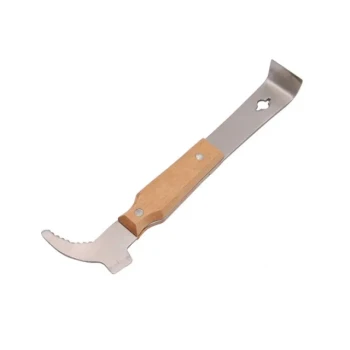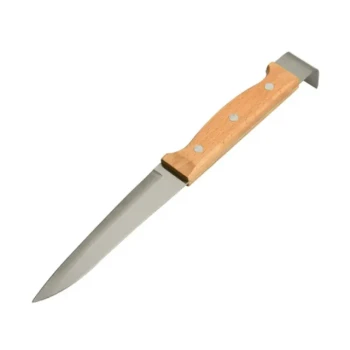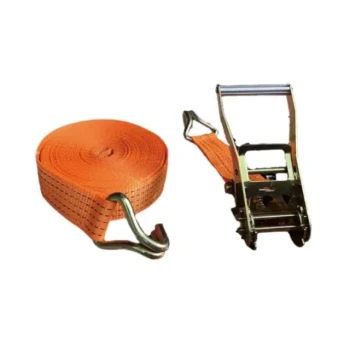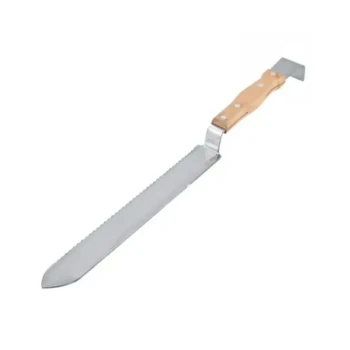The number of frames in a Flow Hive depends on the specific model you choose. A Flow Super, the box used for honey harvesting, contains either 6 or 7 specialized Flow Frames. This design is not arbitrary; it's engineered to fit perfectly within the two most common sizes of standard Langstroth beehives, the global standard for beekeeping equipment.
The key to understanding the Flow Hive system is recognizing its foundation: it is not a completely separate system but rather an advanced honey super designed to be compatible with standard Langstroth hives. This means the number of frames is dictated by the dimensions of the Langstroth box it is designed to fit.

The Two Standard Flow Hive Sizes
The core of the Flow Hive system is the "Flow Super," the box that contains the special honey-harvesting frames. This super is designed to replace a standard Langstroth honey super.
The 6-Frame Flow Super
This model is designed to fit on top of an 8-frame Langstroth hive.
The brood box, where the queen lays her eggs, will contain 8 standard Langstroth frames. The Flow Super on top will contain 6 Flow Frames.
The 7-Frame Flow Super
This larger model is designed to fit on top of a 10-frame Langstroth hive.
The brood box for this hive will contain 10 standard Langstroth frames. The Flow Super on top will contain 7 Flow Frames.
Why Is the Frame Count Different?
You might wonder why an 8-frame box holds only 6 Flow Frames, and a 10-frame box holds only 7.
The reason is simple: Flow Frames are wider than traditional wooden frames. This extra width is necessary to accommodate the internal mechanism that allows the honey to flow out. Therefore, fewer of them can fit into the same standardized box dimensions.
The Critical Distinction: Brood Box vs. Flow Super
Understanding a Flow Hive requires seeing it as a two-part system. The specialized frames are only used for honey collection, not for raising bees.
The Brood Box: The Bee Nursery
The bottom box (or boxes) of the hive is the brood chamber. This is the heart of the colony where the queen lays eggs and the bees raise their young.
This box uses standard, traditional Langstroth frames, not Flow Frames. This is essential for the health of the colony and allows beekeepers to perform regular hive inspections in the conventional way.
The Flow Super: The Honey Pantry
The Flow Super is the box placed on top of the brood box, usually separated by a queen excluder to prevent the queen from laying eggs in the honey frames.
This is the only part of the hive that contains the specialized Flow Frames. Its sole purpose is for the bees to store surplus honey that can then be harvested.
Understanding the Trade-offs
Choosing between the 6-frame and 7-frame system involves practical considerations that directly impact your beekeeping experience.
The 6-Frame System (8-Frame Langstroth)
This setup is often preferred by backyard hobbyists. Its primary advantage is its lighter weight. A full box of honey is extremely heavy, and the smaller 8-frame standard makes every lift more manageable.
The 7-Frame System (10-Frame Langstroth)
This is the most common size in many parts of the world. It offers a greater capacity for honey production per box. However, it is significantly heavier and can be more difficult to lift and manipulate, which is a critical factor to consider.
Making the Right Choice for Your Goal
Your decision should be based on your physical ability and beekeeping objectives.
- If your primary focus is ease of management and you're a backyard hobbyist: The 6-frame system is likely your best choice due to its lighter, more manageable weight.
- If your primary focus is maximizing honey production and you are comfortable with heavy lifting: The 7-frame system offers greater capacity and aligns with a widely used beekeeping standard.
Ultimately, understanding this compatibility with the Langstroth standard is the first step to successfully integrating a Flow Hive into your beekeeping journey.
Summary Table:
| Flow Hive Model | Designed For Langstroth Hive | Number of Flow Frames | Best For |
|---|---|---|---|
| 6-Frame Super | 8-Frame Hive | 6 | Hobbyists prioritizing lighter weight and easier handling |
| 7-Frame Super | 10-Frame Hive | 7 | Beekeepers focused on maximizing honey production capacity |
Ready to Optimize Your Honey Harvest?
Choosing the right equipment is fundamental to the success and efficiency of your beekeeping operation. Whether you manage a small apiary or are a large-scale distributor, HONESTBEE is your trusted partner for high-quality, durable beekeeping supplies.
We supply commercial apiaries and equipment distributors with the reliable tools they need to thrive. Let us help you build a more productive and manageable operation.
Contact HONESTBEE today to discuss your wholesale needs and discover how our equipment can benefit your business.
Visual Guide

Related Products
- HONESTBEE Advanced Ergonomic Stainless Steel Hive Tool for Beekeeping
- HONESTBEE Professional Multi-Functional Hive Tool with Ergonomic Wood Handle
- HONESTBEE Professional Long Handled Hive Tool with Precision Cutting Blade
- Honey Flow Garden Bee Hive Flow Hive Best Beehive for Beginners
- Automatic Honey Flow Beehive 4 Frame Mini Hive for Beekeeping
People Also Ask
- What are the features of a regular hive tool? The Essential Multi-Tool for Every Beekeeper
- Why do hive tools have a hole? Unlock the Secret to Efficient Beekeeping
- How should beekeepers handle bees when using a hive tool? Master Calm, Deliberate Techniques
- Why is it important to compare the progress of different hives? A Beekeeper's Key Diagnostic Tool
- What is a hive tool and what are its uses? Master Your Hive Inspections with the Essential Beekeeper's Tool



















